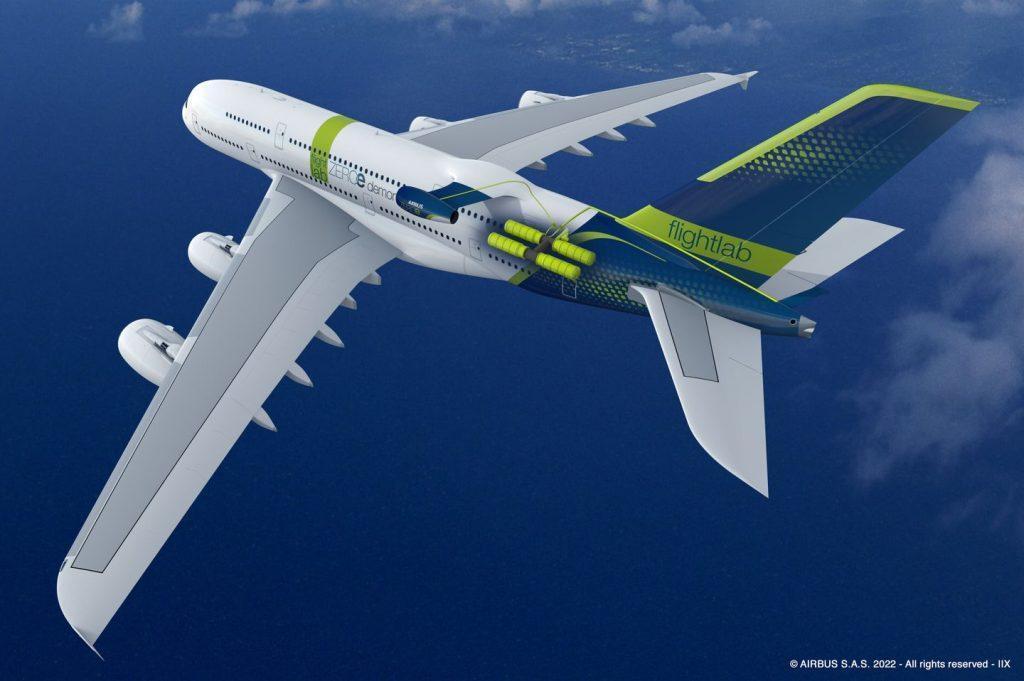
At the Paris Air Show, Airbus highlighted two advances on hydrogen : the fuel cell as an auxiliary generator and the hydrogen-powered gas turbine.
Airbus: significant advances on hydrogen technology
Let’s talk about the HyPERION project first. This project brings together Safran, Airbus and Ariane Group and was launched as part of the Future Investment Programme (PIA). The aim was to explore technical solutions for hydrogen propulsion by 2035. Airbus reports significant progress.
The study covered the entire process, from the fuel leaving the tanks to the ejection of the ignited gases. The definition of the distribution circuit drew heavily on ArianeGroup’s experience of fuel behaviour on Ariane launchers. Hydrogen is stored in liquid form, then conditioned to reach optimum temperature and pressure in the engines.
Ariane: from spacecraft to aircraft
Several test programmes have been carried out as part of the HyPERION project. These include hydrogen combustion in close collaboration with ONERA, compatibility tests on metallic materials, and tests on an initial hydrogen conditioning system (pressure and temperature control).
Last May 12, at its Vernon test centre, Ariane Group successfully carried out a proof-of-concept test of a hydrogen conditioning system to power an aeronautical gas turbine. This first was achieved by reusing equipment (electric pump, gas generator, heat exchangers) originally intended for space applications.
The fuel cell acts as an auxiliary generator
In another programme, supported by Airbus UpNext (the subsidiary in charge of innovation), the hydrogen fuel cell is being used as a non-propulsive energy generator, both on the ground and in flight. It powers what is known as the APU (Auxiliary Power Unit). This small additional engine is used to manage air conditioning, on-board lighting and electrical power for the avionics. With this new technology demonstrator, steered from its facilities in Spain, Airbus UpNext will replace the current APU on an A330 with a hydrogen fuel cell system that will produce electricity. This hydrogen fuel cell demonstrator has been baptised HyPower. It will also make it possible to reduce CO2, nitrogen oxide (NOx) and noise emissions associated with a conventional APU.
An Airbus flying hydrogen demonstrator in 2025
“These tests will mark another milestone in our decarbonisation journey and our ZEROe programme with an ambitious flight demonstration that will take off by the end of 2025,″ said Michael Augello, CEO of Airbus UpNext. “We want to demonstrate the operability and integration of the system, including refuelling the aircraft with hydrogen. We will demonstrate the system under realistic conditions, climbing to 25,000 feet and flying for an hour with 10 kg of hydrogen gas on board. However, we can’t do this alone. Our cooperation with the Spanish government and external partners will be a key part of this series of tests.”
Do you want to find out more about Airbus’ advances on hydrogen? Then our last 2 articles on the subject should interest you. You can read them here and there.
Article written by Laurent Meillaud and translated by Logan King





